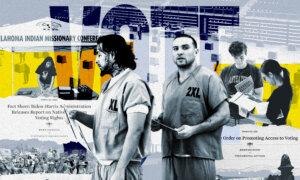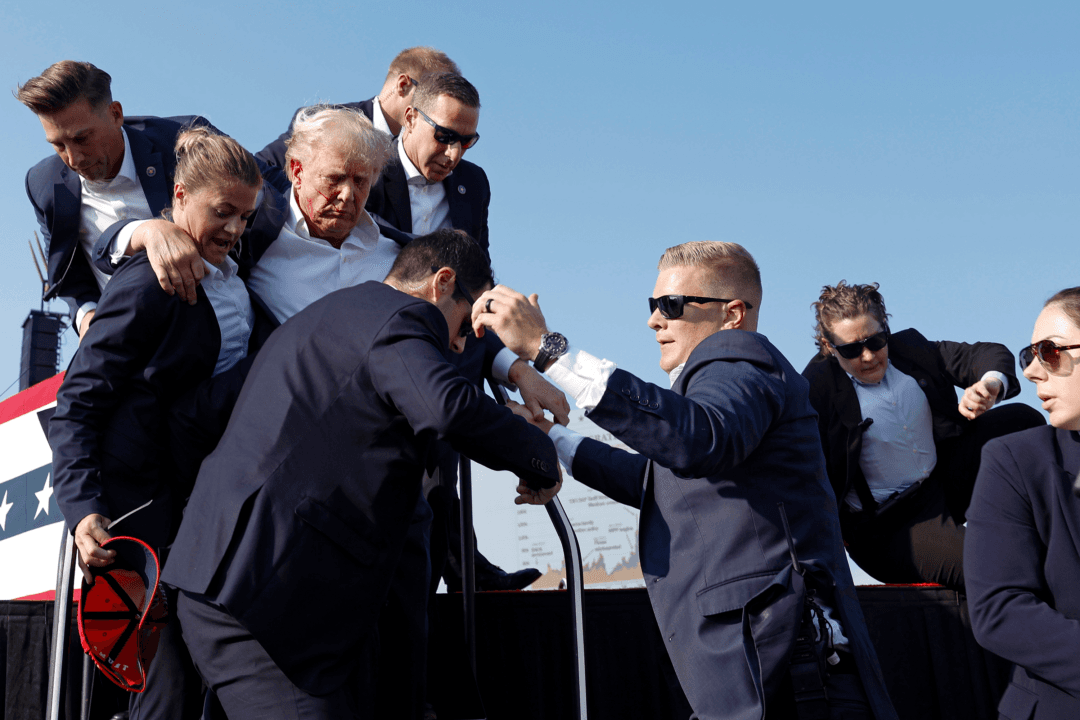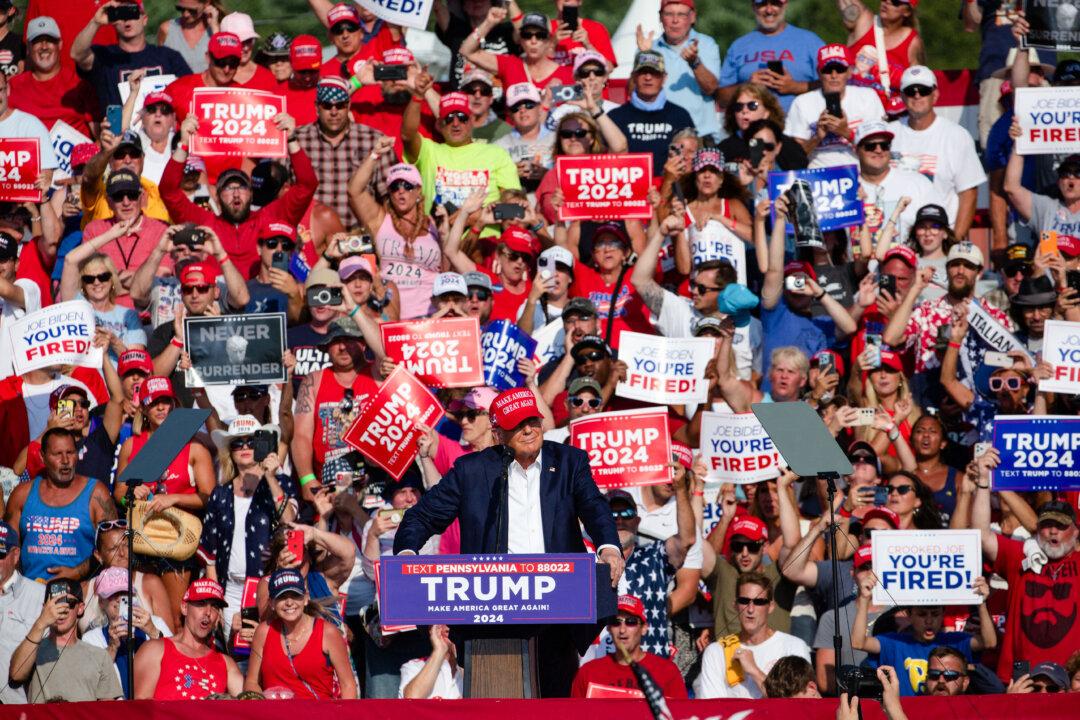When politicians make campaign promises, the public can only wonder if those promises will be kept. In the repeat race between President Joe Biden and former President Donald Trump, discerning voters can now look back at their executive orders and consider what each candidate has already accomplished.
Executive orders are one of the clearest pictures of presidential priorities.
Working outside the legislative branches, the executive order allows presidents (and state governors) to change government policy. It can be wielded as a useful tool to advance administration goals or as an overstep of authority.
President Abraham Lincoln’s 1863 Emancipation Proclamation, which freed millions of slaves, is one of the most well-known executive orders.
President Franklin Roosevelt signed an executive order in 1941 establishing the Office of Scientific Research and Development, which facilitated the Manhattan Project and the development of the atomic bomb.
In another executive order, President Roosevelt created internment camps in 1942 and forced 100,000 Japanese Americans to live in them under the umbrella of national security after the Japanese attack on Pearl Harbor.
Comparing Candidates
The Epoch Times has compared the 138 executive orders President Biden has signed so far to the 220 executive orders that President Trump signed during his four years in office.By assigning a category to each, the orders reveal the priorities to which each president chose to devote attention.
President Biden’s executive orders concentrated on the following topics, ranked from most to fewest orders issued: COVID-19; diversity, equity and inclusivity (DEI); labor; climate change; military; Russia; health; cybersecurity; immigration; national security; business and industry; abortion; science; energy; and criminal justice.
President Biden has focused many of his policies on domestic social issues, climate change, and bolstering labor unions.
Former President Trump’s executive orders tackled more issues. Here they are, also ranked from most to fewest orders issued: health; internal workings of the government; labor; national security; COVID-19; business and industry; military; immigration; Venezuela; China; the environment; Iran; American history and culture; cybersecurity; DEI; economic development; regulations; First Amendment; education; elections; energy; infrastructure; science; space; international trade; agriculture; criminal justice; public records; sanctions; artificial intelligence; abortion; census; children; federal lands; foreign aid; guns; Hong Kong; human trafficking; Mali; natural resources; Nicaragua; North Korea; personal finances; U.S. Post Office; retirement; social services; Sudan; Syria; taxes; Uzbekistan; and welfare reform.
President Trump promised to “drain the swamp,” in Washington, and many of his executive orders addressing the internal workings of the government were an attempt to do that. His orders often addressed national security, international relations, and growing the economy.
It should be noted that presidents also use executive orders for simple tasks such as adjusting a government pay rate or declaring a federal day off work. For this study, those tasks were categorized as “miscellaneous,” and set aside.

Some executive orders get mired in court challenges. While each president enters office with an agenda, they must respond to the events that shape their term. Often, executive orders are used in response to these events.
For President George W. Bush, the terrorist attacks of Sept. 11, 2001, were a defining event of his term. Both Presidents Biden and Trump dealt with the COVID-19 pandemic during their terms, with President Trump issuing 11 and President Biden issuing 15 COVID-19-related executive orders.
Some orders straddle multiple categories. In those cases, The Epoch Times assigned the executive order the most prominent category. For example, President Biden’s Executive Order 14030 mentions climate change, financial institutions, and diversity, equity and inclusion (DEI). But for this report, it was categorized as “climate.”
This executive order calls for the Biden administration to develop a government-wide strategy to measure and mitigate climate-related financial risk to federal government programs.
It also seeks to determine the cost to achieve net-zero greenhouse gas emissions for the U.S. economy by no later than 2050, and to fund related projects with both private and public money, while aiming to advance economic opportunity, worker empowerment, and environmental mitigation, especially in disadvantaged communities and communities of color.
During his term, President Biden has issued 15 DEI-related executive orders, tying for first place with COVID-19 as the two most prominent categories during his presidency. Executive Order 14004 allowed transgender-identifying individuals to serve in the military using their chosen gender identity; Executive Order 14020 established the White House Gender Policy Council; and Executive Order 13985 was the first executive order signed by President Biden on Jan. 20, 2021. It was described as “advancing racial equity and support for underserved communities through the federal government.”

This order called for an “equity assessment” in all federal agencies to remove barriers that could prevent “underserved communities” from interacting with the government, in receiving services or contract opportunities.
Underserved communities are mostly non-whites, defined in the order as “Black, Latino, and Indigenous and Native American persons, Asian Americans and Pacific Islanders and other persons of color; members of religious minorities; lesbian, gay, bisexual, transgender, and queer persons; persons with disabilities; persons who live in rural areas; and persons otherwise adversely affected by persistent poverty or inequality.”
Any order directed at a specific group of people was counted as DEI.
President Trump issued four DEI-related executive orders, including 13899, “Combating Anti-Semitism,” and 13950, “Combating race and sex stereotyping.” It prevented federal contractors from forcing employees to undergo training that promotes “the false belief that America is an irredeemably racist and sexist country.”
The order noted that the Department of Treasury held a seminar, that the EO quotes from, as promoting that “virtually all white people, regardless of how ‘woke’ they are, contribute to racism.” Training materials from Argonne National Laboratories, a federal entity, said racism “is interwoven into every fabric of America” and described the use of phrases like “color blindness” and “meritocracy” as actions of bias. Training materials from Sandia National Laboratories, another federal entity, asked white men to acknowledge their white privilege to each other.
“All of this is contrary to the fundamental premises underpinning our republic: that all individuals are created equal and should be allowed an equal opportunity under the law to pursue happiness and prosper based on individual merit,” President Trump’s order read.
President Biden revoked the order on day one of his term, saying the order “prohibited federal contractors and subcontractors from providing certain workplace diversity training and programs.” He ordered that any employee complaints collected in connection with President Trump’s order be closed, and for the government not to engage in any enforcement of the rule.
President Biden revoked at least 71 of former President Trump’s orders, many during his first days in office.
The revocations included seemingly noncontroversial orders like Executive Order 13978, which was President Trump’s plan to build the National Garden of American Heroes, a sculpture garden honoring great figures of America’s history. More consequential orders were also revoked, such as Executive Order 13853, which established the White House Opportunity and Revitalization Council. The council was tasked with encouraging public and private investment in urban and economically distressed areas and working with state, local, and tribal governments to find ways to better use public funds to revitalize these communities.
Different Goals

The executive orders show different approaches to the same problems.
President Biden issued five immigration-related orders, including 14012, titled “Restoring Faith in Our Legal Immigration Systems and Strengthening Integration and Inclusion Efforts for New Americans,” and 14013, titled “Rebuilding and Enhancing Programs to Resettle Refugees and Planning for the Impact of Climate Change on Migration.” President Biden’s orders are aimed at easing the immigration process and welcoming people crossing U.S. borders.
President Trump issued six immigration orders, including Executive Order 13780, titled “Protecting the Nation From Foreign Terrorist Entry Into the United States,” and Executive Order 13815, “Resuming the United States Refugee Admissions Program With Enhanced Vetting Capabilities.” These orders aimed to protect legal immigration routes, U.S. sovereignty, and national security by providing more information about the people entering the United States.
President Biden issued 12 labor-related orders, and many were connected to unions. Order 14025, “Worker Organizing and Empowerment,” is meant to encourage employees to form or join unions to counter the “steady decline in union density in the United States and the loss of worker power and voice in workplaces,” the order said.
President Trump also wrote 12 labor-related executive orders, including 13845 “Establishing the President’s National Council for the American Worker” which called for the development of a strategy to modernize skills training for workers.
“For too long, our country’s education and job training programs have prepared Americans for the economy of the past. The rapidly changing digital economy requires the United States to view education and training as encompassing more than a single period of time in a traditional classroom,” the order stated. “We need to prepare Americans for the 21st-century economy and the emerging industries of the future.”
Most Viewed

President Biden’s top three most viewed orders are EO 14028, improving the nation’s cybersecurity (136,000 views); EO 14043, requiring COVID-19 shots for federal employees (131,000 views); and EO 14008, tackling the “climate crisis at home and abroad” (131,000 views), a plan that includes a host of climate policies, including a carbon pollution-free electricity sector by no later than 2035.
Former President Trump’s top three most viewed orders are EO 13848, issued in 2018, which imposed sanctions in the event of foreign interference in a U.S. election (644,000 views); EO 13818, blocking the property of persons involved in serious human rights abuse or corruption (217,000 views); and EO 13559, addressing the threat from securities investments that finance Chinese communist military companies (217,000 views).







